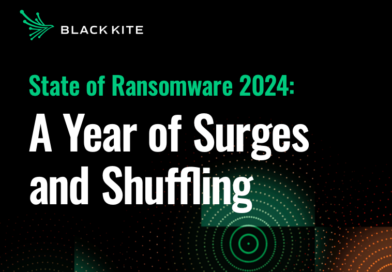With the Data Privacy Day and the data privacy week, the end of January has a particular focus on protecting data.
The GDPR caused an uproar when it was implemented in 2018, but by today we see more and more countries adopting similar laws and regulations. And for a good reason, too: in our special on data privacy, read expert commentary on data privacy, but also useful knowledge about how your personal data is being used – data collection is not always evil.

Telemarketers are hated, but loved by criminals and entrepreneurs
Everyone hates telemarketers. If they can convince one or two suckers out of a thousand call to sign up, it…more...
Free Membership Required

Crossing the Compliance Chasm
There is a wide gap between regulatory compliance mandates and practical implementation and enforcement that I like to call the “Compliance Chasm”. That chasm is defined by the activity to protect consumers and consideration for the economic and operational impact on business enterprises. Finding that balance requires thought, not the more popular whack-a-mole enterprise strategy that reacts to new compliance mandates.
The frequency and size of regulatory fines are rising for non-compliance. In January 2023, Meta was fined $418 million for GDPR violations by Meta properties’ Facebook and Instagram. Ireland’s Data Protection Commission follows up in May that same year with a $1.3 billion fine for additional violations. And those were just the latest fines imposed on web giants, that also included Google and Amazon.
The targets of those fines might be justified in saying compliance is an impossible task. By 2025 the volume of data/information created, captured, copied, and consumed worldwide is forecast to reach 181 zettabytes. Nearly 80% of companies estimate that 50%-90% of their data is unstructured text, video, audio, web server logs, or social media activities.

Enhancing Security Operations Efficiency
Today businesses face increasingly sophisticated cyber threats that necessitate robust security measures. One such innovative approach gaining traction is the Security Operations Center as a Service (SOCaaS). This model offers organizations the opportunity to enhance their security operations efficiently and effectively by leveraging external expertise and advanced technologies.

Mining data is daunting but crucial
The cybersecurity industry seems addicted to research but isn’t all that good at it. Mining the massive amount of data produced is daunting but crucial to everyone.
Surveys and studies are an important part of marketing form the cybersecurity industry. Cyber Protection magazine receives a lot of them. We read them all. In the two months before the RSA Conference, more than one a day came into our inbox. However, they are not a great source of independent data and insight.
Ignoring the cherry-picked data highlighting a particular company’s product or service, there are a few nuggets that, taken together, produce some interesting insights. Out of 60+ reports, we took a pass on any that were repetitive, were suspect methodologically, or effectively plagiarized from another source. We chose to look at seven with a solid methodology, representation of industry-wide concerns, and originality. The reports came from Dynatrace, Black Kite, SlashNext, Metomic, Originality AI, Logicgate, and Sophos. We found three common themes: The impact of AI on security, government regulation compliance, and understanding of security concerns on the C-suites and board levels.
Understanding security issues.
Almost every study has a common complaint. CISOs say application security is a blind spot at the CEO and board levels. They say increasing the visibility of their CEO and board into application security risk is urgently needed to enable more informed decisions to strengthen defenses.
However, Dynatrace’s study said CISOs fail to provide the C-suite and board members with clear insight into their organization’s application security risk posture. “This leaves executives blind to the potential effect of vulnerabilities and makes it difficult to make informed decisions to protect the organization from operational, financial, and reputational damage.”
Recent news shows the study may have a point. Marriott Hotels admitted that a 2018 breach was the result of inadequate encryption of customer data. In 2018 the company claimed their data was protected by 128-bit AES encryption when customer identity was only protected by an outdated hashing protocol. One can imagine the discussion between the CEO and the IT department:
CEO: is our data encrypted?
IT manager: Yeah, sort of.
CEO: OK, good enough
If the CEO doesn’t understand the difference between a hash and AES encryption, that’s a problem.
And there many be evidence that ignorance is widespread. Apricorn reported that the number of encrypted devices in surveyed companies had dropped from 80 percent to 20 percent between 2022 and 2023. Some of that could be attributed to work-from-home (WFH) growth in companies. It is also likely that companies over-reported what was encrypted simply because they did not understand what “encryption” meant. Once they learned the meaning, adjustments were made.
That lack of a foundational security technology could be a reason for the devastating growth in ransomware in the past two years.

Securing the building blocks of an interconnected world
APIs are often overlooked when it comes to securing a company's landscape. We sat down with Andy Grolnick, CEO at Graylog,to discuss the rapidly growing market of API security.


